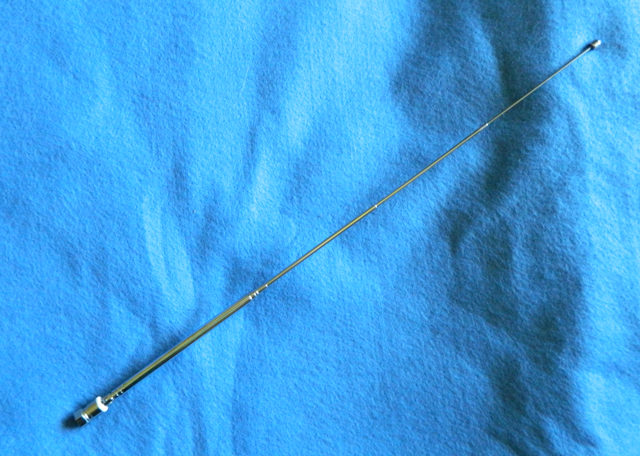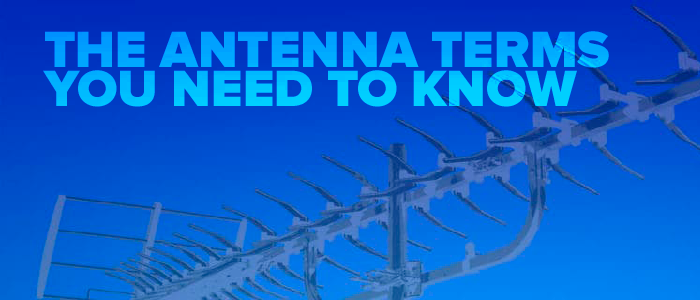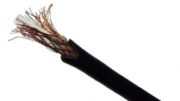Monopole. It’s the simplest form of antenna. You may not have known what it was called, but you’ve been using them your whole life. Depending on your age, you might have used it on a handheld transistor radio, walkie-talkie, or even your first cell phone (remember the ones where you had to pull up the antenna with your teeth?) But no matter, the monopole antenna has been with us for quite some time and it’s not going anywhere.
This is a monopole antenna.

This is a monopole antenna that I took off an old portable TV. Like most monopoles, it extends if you want it to, but that’s not something that all monopoles do. Some are like the “rubber duck” antennas found on portable radios and scanners.
Here’s what a monopole has going for it: it’s simple and flexible. Most monopole antennas are designed to move around and get bigger or smaller as needed, and that means they’re portable and can be aimed to try to get the best possible reception. Getting the best reception from a monopole doesn’t mean making it as big as possible, though.
Monopoles work well, because…
Any antenna will pick up a particular frequency particularly well if it’s either the same size as the actual radio wave, or an even fraction of it (like half or one quarter.) One way of getting better reception is to extend the antenna, but another way is actually by rotating it. The antenna acts as if it’s a different size if it’s pointed differently… sort of like how it could look smaller if you view it straight on than if you view it from the side.
You probably have dozens of monopole antennas in your home. Any mobile device without a visible antenna probably has either a monopole or dipole (we’ll talk about dipoles in another article) built into it. Your cell phone and tablet may have monopoles in them, and if you’re still rockin’ that 2000s-era cordless phone it probably has one too. Devices with multiple radios (for example, phones with Wi-Fi and Bluetooth) may have several tiny monopoles. Folks, they are everywhere.
For TV reception, the monopole isn’t usually the best choice. The frequencies used for TV tend to require a longer antenna and respond much better to other sorts of antennas. It’s good enough for a small portable but if you’re putting something up on your roof you should really consider another sort of antenna, and that’s a subject for the next article.
The right choice for TV antennas
There are hundreds of over-the-air antennas out there. In many cases you can choose almost any of them and they’ll work. But why guess? Get a free antenna recommendation from Solid Signal. A team of real experts will review all the information you supply. Then, they’ll come up with a parts list that will work for your particular situation. They’ll let you know if you can get by with an indoor antenna, or if you’ll need something bigger. This is more than just an app. This is real people looking at your specific information. There may come a day when an app can do that but for today… it’s up to the experts at Solid Signal.
Know what you want? Shop the best selection of antennas on the web now at Solid Signal.





